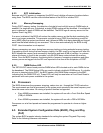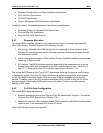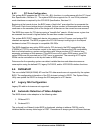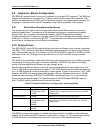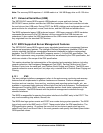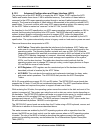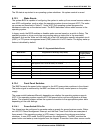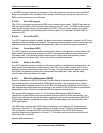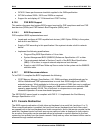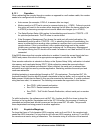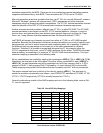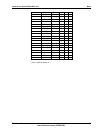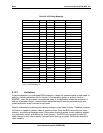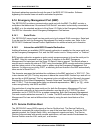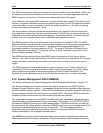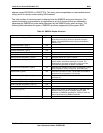
BIOS Intel® Server Board SE7501WV2 TPS
Revision 1.0
Intel reference number C25653-001
82
• WFM 2.0 items per the server checklist supplied in the WfM specification.
• INT15h functions 2500h, 2501h and 2502h as required.
• Support for and display of F12 Network boot POST hot key.
6.12.6 PXE BIOS Support
This section discusses host system BIOS support required for PXE compliance and how PXE
boot devices (ROMs) and PXE Network Boot Programs (NBPs) use it.
6.12.6.1 BIOS Requirements
PXE-compliant BIOS implementations must:
• Locate and configure all PXE-capable boot devices (UNDI Option ROMs) in the system,
both built-in and add-ins.
• Supply a PXE according to this specification if the system includes a built-in network
device.
• Implement the following specifications:
• Plug-and-Play BIOS Specification v1.0a or later.
• System Management BIOS (SMBIOS) Reference Specification v2.2 or later.
• The requirements defined in Sections 3 and 4 of the BIOS Boot Specification
(BBS) v1.01or later, to support network adapters as boot devices.
• Supply a valid UUID and Wake-up Source value for the system via the SMBIOS
structure table.
6.12.7 BIOS Recommendations
To be PXE 2.1-compliant the BIOS implements the following:
• POST Memory Manager Specification v1.01. PMM provides a straightforward way for
LAN on Motherboard PXE implementations to move their ROM image from UMB to
extended memory. While methods to do this exist outside of PMM, their use is undefined
and unreliable. Placing PXE ROM images into UMB space reduces the available UMB
space by approximately 32 KB. This is sufficient to compromise or even prevent
successful operation of some downloaded programs.
The SE7501WV2 server board is compliant with PXE 2.1. It implements the Post Memory
Manager Specification v1.01.
6.13 Console Redirection
The BIOS supports redirection of both video and keyboard via a serial link (serial port 1 or 2).
When console redirection is enabled, the local (host server) keyboard input and video output
are passed both to the local keyboard and video connections, and to the remote console via the
serial link. Keyboard inputs from both sources are valid and video is displayed to both outputs.
As an option, the system can be operated without a keyboard or monitor attached to the host
system and run entirely from the remote console. Setup and any other text-based utilities can be
accessed through console redirection.



